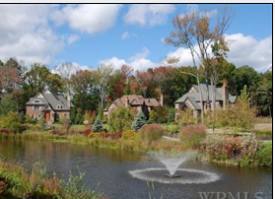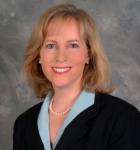Attention Greenburgh Neighborhood Watch
- Details
- Hits: 3279
 The Greenburgh Police Department is investigating several recent burglaries in Edgemont, Ardsley and Scarsdale. Burglaries have occurred on High Point Road, Andrew Lane, Pheasant Run and Sprain Valley Road. In most cases the burglars entered through a rear sliding glass door by either smashing the window or prying open sliding doors. In the majority of cases, jewelry and electronics have been stolen.
The Greenburgh Police Department is investigating several recent burglaries in Edgemont, Ardsley and Scarsdale. Burglaries have occurred on High Point Road, Andrew Lane, Pheasant Run and Sprain Valley Road. In most cases the burglars entered through a rear sliding glass door by either smashing the window or prying open sliding doors. In the majority of cases, jewelry and electronics have been stolen.
In the burglary on High Point Road, the homeowner arrived home and found the suspect in the house. The intruder was described as small-framed male wearing blue jeans with embroidery on pocket. In the other cases, witnesses report seeing a dark colored SUV in the area prior to the incident.
The Greenburgh Police are asking for your help in identifying any suspicious activity in the area. If you notice a suspicious vehicle, person, or incident, get a good description of the suspects and any vehicles that may be involved and call 914-682-5300 immediately.
Police also advise you to keep your doors and windows locked and your alarm activated. Be aware of your surroundings while walking to and from your car and when walking in your neighborhood. A representative from the police department is available to visit your home and do a security survey to help find ways to better secure your home. You can make an appointment for this free service by calling 914-682-5334 or e-mailing pdandreano@greenburghny.com .
If anyone has any information on these burglaries, please call the Greenburgh Police Detective Division at 914-682-5348.
Behar and Quaker Ridge Golf Club Square Off in Court
- Details
- Hits: 5738
 Most assumed that the ongoing feud between Leon Behar of Brittany Close and the Quaker Ridge Golf Club was over when the Scarsdale Planning Board issued their decision on the matter, following their October 27 meeting. At that time, the Planning Board heard pleas from Behar’s attorney, Brittany Close residents and lawyers from the Quaker Ridge Golf Course concerning Behar’s need for protection from errant golf balls that were struck from the second hole of the course.
Most assumed that the ongoing feud between Leon Behar of Brittany Close and the Quaker Ridge Golf Club was over when the Scarsdale Planning Board issued their decision on the matter, following their October 27 meeting. At that time, the Planning Board heard pleas from Behar’s attorney, Brittany Close residents and lawyers from the Quaker Ridge Golf Course concerning Behar’s need for protection from errant golf balls that were struck from the second hole of the course.
In June 2010, the Behars had gone to court to remedy the problem and Judge Emmett Murphy recommended that the club erect a 60-foot fence to shield the Behars, pending approval from the Scarsdale Planning Board. Until the fence could be erected, restrictions were placed on the use of the second hole of the golf course. These restrictions remained in force all summer and fall until the parties met at the Village Planning Board meeting on October 27. At that time, concerned neighbors argued for a lower fence, as they believed that the 60-footer would be an eyesore looming over their newly built homes.
After learning that scientific data showed that a 40-foot fence would trap 98% of the golf balls, the Planning Board ruled that a 40-foot fence would be adequate. They also called for a stand of 35-foot Armstrong Maple trees to be planted on the club side of the fence. The fence is approved for five years until the trees can grow high enough to screen the property.
The club is now waiting for the building permit for the fence and plans to erect the 40-foot screen as soon as they get the go ahead from Scarsdale Village.
So it was puzzling why Mr. Behar and attorney Julius Cohn chose to continue to pursue their original lawsuit in court on November 29th. When questioned, Mr. Behar said, “My position is that I will not drop the case until they (Quaker Ridge Golf Club) actually put up the net and plant the trees according to the plans submitted to and approved by the Planning Board. Only once they live up to their obligation in a way that remedies the problem will I consider dropping the case.”
In the interim, Behar has removed the 25-foot fence he originally built, as he did not have approval for it from the Village. Restrictions on usage of the second hole have been lifted because the golf season is over, though the course continues to be used. Judge Emmett Murphy has ordered additional motions to be filed December 13, with responses from Behar’s attorney due on 12/31. Stay posted.
Friday Night Lights
- Details
- Hits: 4665
 Advocates for the installation of lights at the turf field of Scarsdale High School attended the Scarsdale School Board meeting on Monday November 22. Rippy Philipps and Steve Nicholas represented the Scarsdale Youth Football League to ask for the Board’s prior approval for a private fundraising effort for the project.
Advocates for the installation of lights at the turf field of Scarsdale High School attended the Scarsdale School Board meeting on Monday November 22. Rippy Philipps and Steve Nicholas represented the Scarsdale Youth Football League to ask for the Board’s prior approval for a private fundraising effort for the project.
The group would like to collect $300,000 to install lights at the field. The lights would allow for extended use of the field by Scarsdale High School and Middle School schools teams as well as club teams, including the Scarsdale Youth Soccer and Football teams. With a lit field, evening practices and games could be scheduled as they are now in the neighboring towns of Eastchester, White Plains and Ossining.
Philipps and Nicholas contend that lighting the field has many advantages. First, it would bring more students and parents to the field at night, thereby creating a sense of community. Teams who now have limited practice time due to wet fields and darkness would have additional playing time. Volunteer coaches, who cannot leave work before the sun goes down would be able to coach under the lights at night, thereby increasing volunteerism. In their view, lighting the field would help to combat drug and alcohol use by teens who could gather at the school and participate in or watch community games.
At face value, a gift of $300,000 for infrastructure improvements to the schools at a time when strapped budgets have prevented the athletics department from funding any major projects seemed beneficial. Coincidentally, the gift proposal came just weeks the League of Women Voters convened a panel of experts to explore the establishment of an educational foundation that would govern large gifts to the schools. Many of the issue discussed by that panel emerged in the conversation about the gift of lights on Monday night and resulted in more questions than answers.
Among these questions were both philosophical and practical concerns about the acceptance of the gift and installation of the lights, including:
- How would the gift affect the School Board’s role of making budget priority decisions?
- Is it desirable to use outside funds to support the schools?
- Would the need to study this issue interrupt the regular business of the Board and the budgeting process and strain the limited resources of the staff?
- Should this decision be considered on its merits or as part of a larger discussion about the establishment of a foundation?
- Would a gift of this size benefit the entire community?
- Would the group making the contribution exercise undue influence?
- Is the installation of lights a priority for the High School Athletics Department?
On a more practical level, the Board and Dr. McGill discussed the following:
- Would nighttime practices and games interrupt the academic program at school and family time?
- Would night games require extra supervisory, traffic and custodial staff on school grounds?
- Even if the Board agreed to a schedule for field use now, would there be pressure to increase hours of play in the future?
- What are the costs to maintain the lights, including electricity, bulbs and repairs and who would fund this?
- Would Fox Meadow residents who surround the field object to bright lights in their neighborhood and to increased evening traffic to the school?
- Looking at this project as a cost vs. benefit analysis, would the monies be spent for the maximum benefit? i.e. would a few additional hours of field time justify the cost?
Dr. McGill and Linda Purvis offered information about current priorities for the High School Athletic Department and apparently lights were not on the list. There is a need to renovate the fitness center and bring it up to code at an estimated cost of $200,000. The baseball diamond has drainage issues and needs to be graded and repositioned and McGill added that the turf field is in need of repairs.
In order to get more information, the Board decided to convene a study session to formulate a list of questions to be answered by advocates for the field concerning schedules for usage, estimated costs and revenues and the impact of lights on the school and the neighborhood.
At this point in the meeting, Dr. Nicholas again addressed the Board, asserting that the lights were for the” entire community” and that they would bring kids back to the school at night. He challenged the Board to “go out and speak to the community,” claiming that “this is what they (the community) wants and that the elected Board members were “losing perspective” on what they needed to provide.
Gail Leone a co-President of Maroon and White spoke in support of the lights and assured the Board that students with night practices would do their homework in the afternoon as they are “disciplined school athletes.” A Fox Meadow resident said “the lights would offer a layer of security of those who walk on the track at night, and that lights “would be great for the kids and the entire community.”
While the Board thanked the Association for their generosity, the discussion was an excellent illustration of how ad hoc funding initiatives can influence programs funded by the district and divert the Board from their regular business. It will be interesting to follow the process and see how it evolves. We will continue to track the discussion and report to you.
Tax Revaluation Recommended by Scarsdale Forum
- Details
- Hits: 9287

Fair assessments for property taxpayers was the main theme discussed as the current New York State system is both hard to understand and properties are not treated uniformly, with some paying too much and others too little. Since property tax is based upon property value, and the last revaluation in Scarsdale was done 41 years ago in 1969, there is no current standardized and accurate assessment for all 5900+ parcels in the Village of Scarsdale.
Speaker John Wolham, Regional Director of the New York State Office of Real Property Tax Services, cited current tax inequities measured in recent Scarsdale residential home sales which have similar sale prices but vastly different tax assessments. He explained how reassessment is a comprehensive review of all properties in a community in which all assessments are set back to market value with the primary goal of fair share tax payment. Undeniably Scarsdale property owners pay among the highest property taxes in the nation and similar neighboring community’s have also commissioned studies on tax revaluation and its impact. Bronxville Mayor, Mary Marvin, spoke about the level of uncertainty for homeowners and residents’ need to understand exactly what revaluation entails. Bronxville successfully completed a revaluation in 2007 which required local government transparency and an educational and collaborative process with open communication. She said “an under-assessed home will stay that way in perpetuity unless you do revaluation. Furthermore, people don’t want to pay more than what the assessor has valued the house at.” Mamaroneck Town Administrator, Steve Altieri, reported the Mamaroneck Town Board resolved in March 2010 to go forward with a town and village-wide revaluation after a ten year discussion and the precipitous increase to over 1,000 tax certiorari challenges this year costing the town $500,000 in the last two years with a related impact on the school budget. Mamaroneck has 8,500 property parcels and projects the completed revaluation assessment roll to begin in June 2013.
Scarsdale’s Village Manager, Al Gatta has a unique perspective on the issue, as he has conducted three revaluation processes in his career in other municipalities. Currently, as Chair of Westchester County Assessment Commission, he believes the County should pass a law to require reassessment every four years. A detailed report from the committee to the Board of Legislators is expected shortly and will be available to the public. He further explained how the decline in home market values in the past three years has led the county to defend tax appeals and challenges costing $55 million and that the goal of full County revaluation is a proportionate and fair share payable by each municipality to the County. At both the county and village level, a related long term goal is that reassessment will level the playing field thereby limiting tax challenges.
Tax revaluation is a complex issue carrying misperceptions about a very technical subject. Reassessment does not raise taxes - it redistributes taxes away from those paying too much, toward those paying too little. Reassessing a property does not, by itself, increase its tax. It lowers the tax on over-assessed properties and raises the tax on those that were under-assessed. If everyone’s assessment doubles, no one’s tax goes up. Your tax goes up only if your assessment goes up more than the community average. Reassessment does not help or hurt any one group. It will help homes and neighborhoods that have not appreciated as fast as the rest of the community.
Questions arising about possible revaluation and its impact:
- Just how inequitable is the property assessment situation in Scarsdale today? No one really knows because it has been 41 years since the last town-wide reassessment.
- Are older homes on large properties in Scarsdale generally under-assessed and will they have to pay more after revaluation? Current real estate listings provide evidence that significant inequities exist.
- What happens with over-assessed properties? Reductions in assessed values translate to a corresponding reduction in property taxes payable.
- Will there be a transition phase-in or deferral allowed for homeowners who are subject to increased taxes after revaluation? Will basic or enhanced STAR (School Tax Relief) and other exemptions offset increases?
- What is the cost of performing a town-wide revaluation? Request for Proposals would be sent to revaluation companies to determine cost estimates.
To find out more about how the proposed tax revaluation may affect you consult a knowledgeable professional such as your local tax assessor, locally licensed real estate agent or broker, a certified real estate appraiser or tax grievance representative. You can view the discussion on the Forum website here and find additional information about tax revaluation on the following websites:
 Angela Manson is a licensed real estate salesperson with Prudential Centennial, Scarsdale who has studied local tax revaluation proposals on behalf of her clients and the community. She welcomes and assists buyers and sellers in Scarsdale and neighboring communities. She may be reached at 914-420-9878 or amanson@prucentennial.com
Angela Manson is a licensed real estate salesperson with Prudential Centennial, Scarsdale who has studied local tax revaluation proposals on behalf of her clients and the community. She welcomes and assists buyers and sellers in Scarsdale and neighboring communities. She may be reached at 914-420-9878 or amanson@prucentennial.com
A Grenade on the Lawn
- Details
- Hits: 3200

On the morning of November 18, Ms. Judy Messenger of Birchwood Lane in Hartsdale found a strange item on her lawn. It looked like a grenade, and without realizing it could be live, she picked it up and threw it into her garbage can.
She called the police who brought members of the Greenburgh SWAT and Technical Rescue team to investigate. The Westchester County Police Bomb Squad was also put on notice.
The SWAT team found the hand grenade in the garbage can with the safety pin intact and spoon attached. They identified it as a World War II era Mk2 style hand grenade and determined that it was inert. The fuse had been deactivated and the grenade was hollow. Police searched the area for clues to the origin of the grenade.
Could this incident be related to one that involved a live bazooka rocket that was found in the attic of a Joyce Road home in Hartsdale in May? Is someone storing arms from World War II in the neighborhood?











